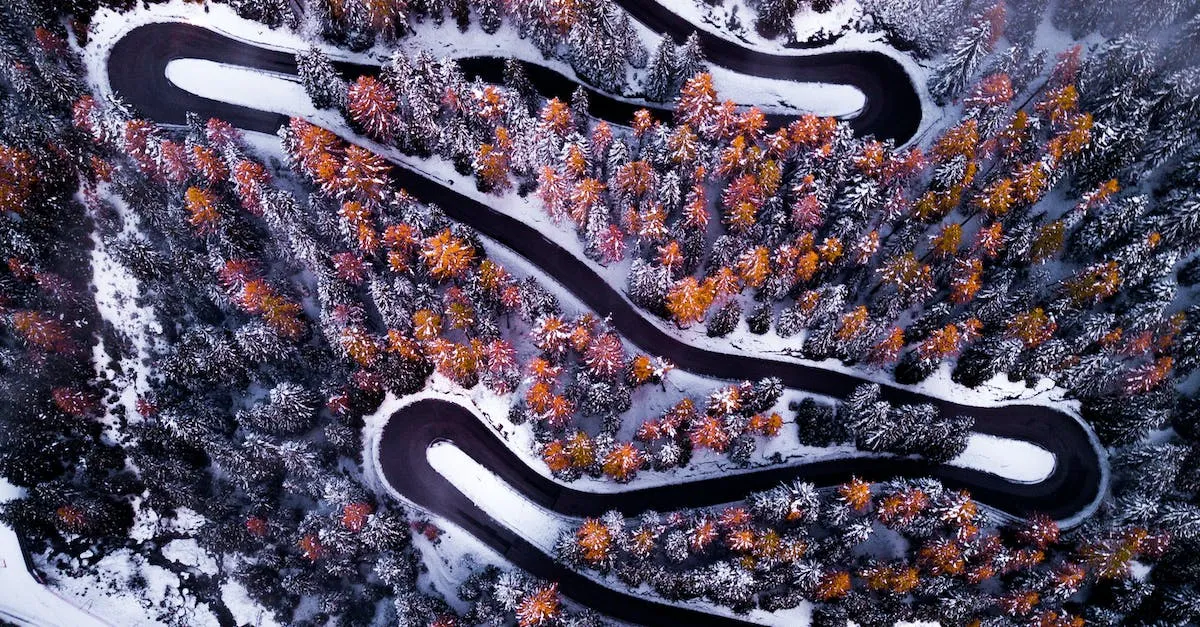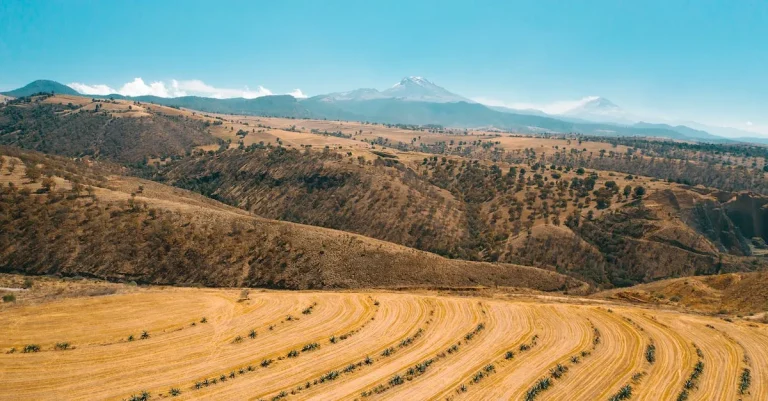The Coldest Month In California
With its perpetually sunny skies and mild climate, California is not typically associated with bone-chilling cold. But even the Golden State sees frigid temperatures during the winter months in certain parts of the state.
If you’re short on time, here’s a quick answer to your question: The coldest month in most of California is December or January, with average low temperatures ranging from the 30s to 40s Fahrenheit depending on location.
In this comprehensive guide, we’ll explore California’s diverse climate zones, discuss the coldest months and average low temps in different cities and regions, look at record lows, and provide tips on what to expect and how to prepare for a California winter.
Overview of California’s Climate Zones
California is known for its diverse and unique climate zones, each offering its own set of weather patterns and temperatures. Understanding these climate zones is crucial in understanding why certain months might be colder than others.
Let’s take a closer look at the different regions in California and their respective climates.
Coastal Region
The coastal region of California experiences a mild and temperate climate throughout the year. The cool ocean breeze keeps the temperatures moderate, making it a popular destination for beachgoers and outdoor enthusiasts.
The coldest month in this region is typically January, with average temperatures ranging from the mid-50s to low 60s Fahrenheit. However, it’s important to note that the coastal region can also experience microclimates, where certain areas may be slightly colder or warmer than others due to factors such as elevation or proximity to the ocean.
Central Valley
The Central Valley of California is known for its hot and dry summers, but winters can be relatively cold compared to other parts of the state. The coldest month in this region is typically December, with average temperatures ranging from the mid-40s to low 50s Fahrenheit.
The lack of coastal influence and the valley’s geography contribute to the colder temperatures during the winter months. However, it’s worth mentioning that the Central Valley is also a large region, and temperatures can vary within its boundaries.
Mountains Region
The mountains region in California is home to some of the highest peaks in the United States, including the Sierra Nevada range. This region experiences a colder and more alpine climate, with snowfall during the winter months.
The coldest month in the mountains region is typically February, with average temperatures dropping below freezing. The higher elevation and proximity to snowy peaks contribute to the colder temperatures experienced in this region.
Desert Region
The desert region of California, including areas like Death Valley and Joshua Tree National Park, is known for its extreme temperatures. Summers can be scorching hot, while winters can be quite cold, especially during the nights.
The coldest month in the desert region is typically January, with average temperatures ranging from the mid-40s to mid-50s Fahrenheit. Despite being a desert, the lack of humidity in the air allows for rapid cooling during the night, resulting in colder temperatures.
Understanding the various climate zones in California is essential for both residents and visitors alike. It helps in planning outdoor activities, dressing appropriately, and understanding the local weather patterns.
Whether you prefer the mild coastal climate, the dry heat of the desert, or the snow-covered mountains, California offers a climate zone to suit every preference.
Coldest Months and Average Lows by Region
Coastal Cities: December/January, Lows in 40s
When it comes to the coldest months in California’s coastal cities, December and January take the crown. During these months, residents can expect to experience average low temperatures in the 40s. So, if you’re planning a trip to cities like San Francisco or Los Angeles during this time, don’t forget to pack your sweaters and jackets!
Central Valley: December/January, Lows in 30s
If you find yourself in California’s Central Valley during December or January, brace yourself for even colder temperatures. The average lows in this region during these months dip down into the 30s. It’s a good idea to layer up and keep warm if you’re exploring cities like Sacramento or Fresno during this time of the year.
Mountains: January, Lows below freezing
Heading up to California’s mountainous regions in January? Be prepared for some seriously chilly weather. The average lows in the mountains during this month can drop below freezing, making it essential to bundle up with heavy winter gear.
Whether you’re hitting the slopes in Lake Tahoe or exploring the stunning beauty of Yosemite National Park, don’t forget your thermals and warm boots!
Deserts: December, Lows in 30s
Even the desert regions of California can experience cold temperatures during the winter months. In December, the average lows in the deserts can reach down into the 30s. So, while you may be enjoying the unique landscapes of Joshua Tree or Death Valley, make sure to pack some warm layers to stay comfortable during the chilly desert nights.
While these are the average lows for each region during the coldest months, it’s important to note that temperatures can fluctuate and vary from year to year. It’s always a good idea to check the weather forecast before your trip and pack accordingly.
Coldest Cities and Temperature Extremes
Coldest Major Cities
California is not typically associated with cold temperatures, but there are some cities in the state that experience frigid conditions during the winter months. While the overall climate in California is known for its mild to warm temperatures, certain areas are exceptions to the rule.
These cities, although not as cold as some in other parts of the country, still experience chilly winters that can catch residents off guard. Here are some of the coldest major cities in California:
- Eureka: Located on the northern coast of California, Eureka is known for its cool, foggy weather. The average high temperature in the coldest month of January is around 55°F (13°C), while the average low temperature dips down to around 40°F (4°C).
- South Lake Tahoe: Nestled in the Sierra Nevada mountains, South Lake Tahoe is a popular destination for outdoor enthusiasts. However, it also experiences cold winters with an average high temperature of around 40°F (4°C) and an average low temperature of around 20°F (-6°C) in January.
- Redding: Located in the northern part of the Sacramento Valley, Redding sees colder temperatures compared to other cities in California. In January, the average high temperature is around 56°F (13°C), while the average low temperature drops to around 38°F (3°C).
Record Low Temperatures
While California may not be known for extreme cold, there have been instances where record low temperatures have been recorded. These temperature extremes serve as a reminder that even in a state known for its warm climate, winter can still bring frigid conditions.
Here are some notable record low temperatures in California:
| City | Record Low Temperature | Date |
|---|---|---|
| Big Bear Lake | -25°F (-32°C) | January 8, 1985 |
| Truckee | -28°F (-33°C) | January 20, 1937 |
| Alturas | -37°F (-38°C) | February 16, 1933 |
It’s important to note that these record low temperatures are rare occurrences and not representative of the typical winter weather in California. However, they highlight the potential for cold snaps and the need for residents and visitors to be prepared for colder temperatures during the winter months.
For more information about California’s climate and weather patterns, you can visit the National Weather Service website.
What to Expect and How to Prepare for a California Winter
When people think of California, they often imagine warm sunny beaches and pleasant weather all year round. However, California does experience winter, and in some parts of the state, temperatures can drop significantly.
It’s important to know what to expect and how to prepare for the coldest month in California.
Clothing/Attire
During the coldest month in California, it’s essential to dress appropriately to stay warm and comfortable. Layering your clothing is key, as temperatures can vary throughout the day. Start with a base layer made of moisture-wicking material to keep you dry.
Add a insulating layer made of fleece or wool, and finally, wear a waterproof and windproof outer layer to protect you from the elements.
Pro Tip: Don’t forget to wear a hat, gloves, and warm socks to keep extremities cozy. And if you’re planning on spending time in the mountains, consider investing in thermal underwear and snow boots for added protection.
Home Weatherproofing
Preparing your home for the cold weather is essential to stay warm and reduce energy costs. Start by checking for drafts around windows and doors. Use weatherstripping or caulk to seal any gaps. Insulating your attic and walls can also help keep the cold air out and the warm air in.
Consider using draft stoppers for doors and windows to prevent cold air from seeping in.
Another important step is to check your heating system. Make sure it is working properly and consider getting it serviced before winter arrives. Using a programmable thermostat can help regulate the temperature and save energy.
Pro Tip: If you have a fireplace, make sure the flue is clean and in good working condition. Stock up on firewood or consider investing in a gas fireplace insert for added convenience and warmth.
Outdoor Activities
Despite the colder temperatures, California still offers plenty of outdoor activities to enjoy during the winter months. Skiing and snowboarding enthusiasts can head to popular mountain resorts such as Lake Tahoe or Mammoth Mountain, where they can hit the slopes and experience the thrill of winter sports.
For those who prefer a milder outdoor experience, California has a number of beautiful hiking trails that can be enjoyed year-round. Just make sure to dress in layers and bring along essential gear such as a map, compass, and plenty of water.
Pro Tip: Don’t forget to check the weather conditions and trail closures before heading out on your outdoor adventure. And always let someone know your plans and expected return time.
By being prepared for the coldest month in California, you can enjoy all that this diverse state has to offer, even during the winter season. So, bundle up, weatherproof your home, and embrace the beauty of California’s winter wonderland!
Conclusion
While nowhere near as frigid as other parts of the country, California still sees cold snaps during its winter months. December and January are generally the coldest times statewide, with average lows ranging from the 30s to 40s. By understanding California’s climate zones and record lows, you can plan activities and prepare your home and wardrobe to stay comfortable during the chilliest months.








